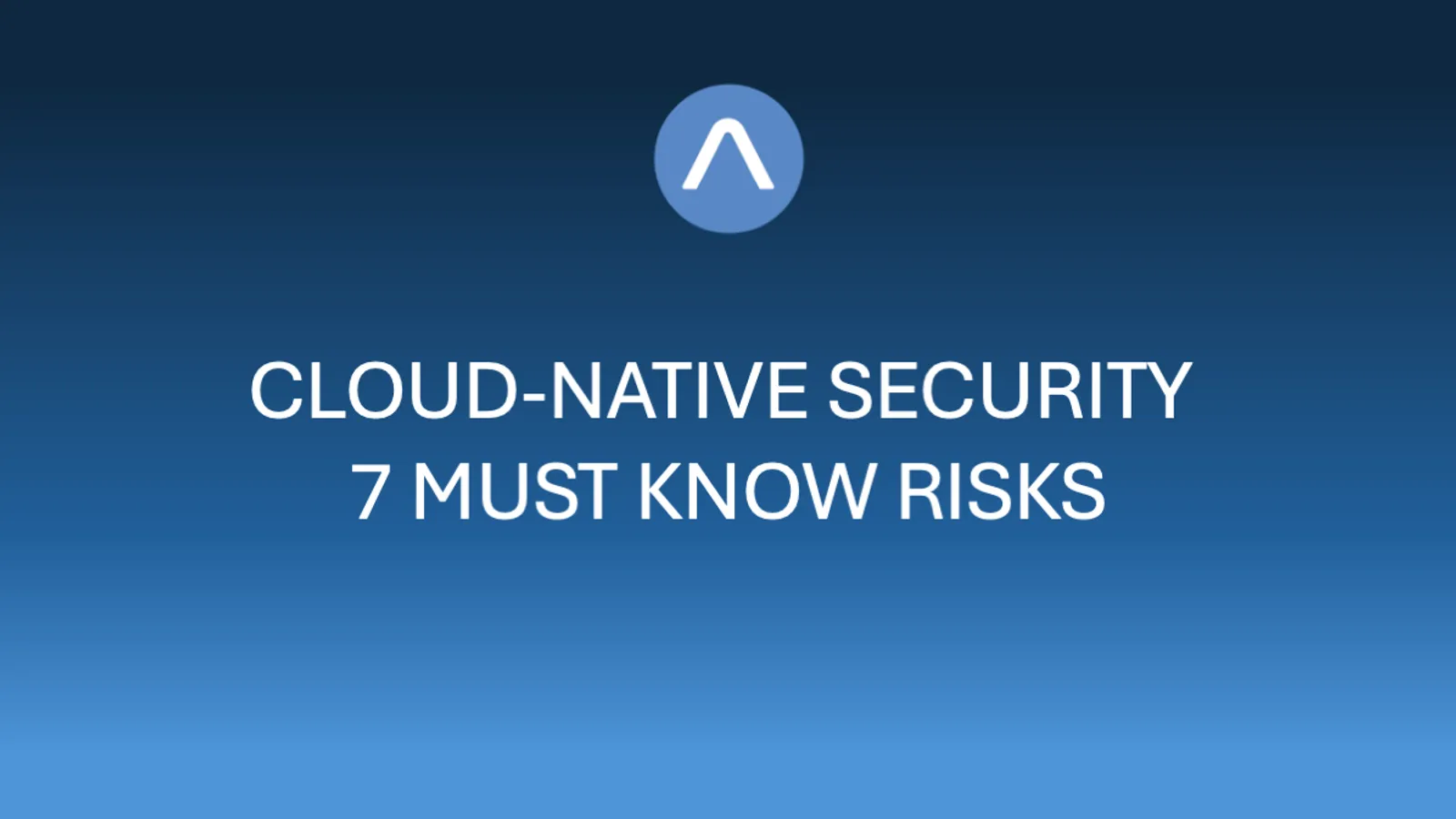How to Protecting Your AWS Cloud-Native Applications from 7 Common Threats
AWS Services to Protect your Cloud-Native Applications from 7 Common Threats

5 min read
If you are a developer or AWS architect, you are aware that your application workloads are potentially vulnerable to threats, but you may be unsure of what AWS services you can use to protect your workloads running in the cloud. During my time at AWS as a Senior Security Solutions Architect, I helped answer these questions and guided customers to use the right AWS security services to secure their workloads. That is also the goal of this blog.
In this post I will give you a high-level understanding of the types of cloud-native threats that fall into each category. By no means should this list be viewed as an exhaustive list of all the types of threats you may face. For each threat category, we have listed the recommended AWS services that can be used to help protect against that particular threat.
For each threat category, we have listed the recommended AWS services that can be used to help protect against that particular threat.
1 - Insecure Cloud Configuration
Common examples of insecure cloud configuration:
- AWS S3 buckets that are publicly available
- Improper permissions on AWS S3 buckets
- Not using encryption at rest and in transit
AWS Services
- Access Analyzer for detecting publicly available and unused resources
- AWS Macie for detecting publicly available AWS S3 buckets and sensitive data stored in S3 buckets
- AWS KMS for encrypting data at rest
2 - Injection attacks
Common examples of injection attacks:
- SQL Injection attack & cross-site scripting (XSS)
- Insecure software code that allows malicious code execution
- Infrastructure as Code for vulnerabilities
AWS Services
- AWS WAF helps protect your web applications from common attacks such as SQL injection, cross-site scripting (XSS), various bot-related threats, and other common web attacks.
- AWS Shield for managed DDoS protection for your web applications.
- Amazon Inspector allows you to scan code repos and scan for vulnerable software installedon your servers.
3 - Improper Authentication\Authorization
Common examples of Improper Authentication\Authorization:
- Unrestricted API access
- Overly permissive IAM Roles
- AWS resources with overly permissive IAM roles attached
AWS Services
- Amazon API Gateway to manage and secure your APIs
- AWS IAM Access Analyzer to detect overly permissive IAM Roles
4 - Insecure Secrets
Common examples of Insecure Secrets:
- Hardcoded usernames and passwords in application code
- Secrets (API keys, passwords) committed to version control repositories
- Using weak encryption algorithms to encrypt data
AWS Services
- AWS Secrets Manager to store sensitive secrets such as passwords and API Keys rather than hardcoding these into software code.
- AWS KMS for encrypting data using industry standard encryption algorithms such as RSA (2048, 3072, and 4096 bit lengths).
Schedule Free Architecture Review
Stay In the know
Subscribe to get our newest Avinteli Insights posts straight to your inbox.
We won't send you spam. Unsubscribe at any time.
5 - Overly Permissive\Insecure Networks
Common examples of Overly Permissive\Insecure Networks:
- Internal only services exposed to the public internet
- Improper network segmentation rules
- Sensitive data being sent over non-HTTPS protocol
AWS Services
- AWS Firewall Manager allows you to centrally manage and enforce network & WAF rules across all of your AWS accounts.
- AWS Certificate Manager (ACM) gives you the ability to create and deploy public and private SSL/TLS certificates, giving you the ability to ensure all of your endpoints communicate over HTTPS protocol.
6 - Untracked AWS Resources
Common examples of Untracked AWS Resources:
- Orphaned AWS resources that are no longer needed
- Shadow IT resources running in your AWS environment
AWS Services
- AWS Config allows you to audit and view configuration changes of your AWS resources.
- AWS Systems Manager allows you to track and manage resources such as AWS EC2 instances, on-premises servers, and servers running in other cloud service providers.
- AWS Resource Explorer lets you easily discover AWS resources running in all of your AWS accounts across all regions.
7 - Lack of Monitoring and Logging
Common examples of Lack of Monitoring and Logging:
- Not collecting metrics at the host level of your EC2 resources.
- No alerting setup to detect critical failures of resources or applications.
- Not monitoring anomalous behavior of users or AWS resources.
AWS Services
- CloudWatch Agent allows you to gather metrics directly at the host-level of your EC2 instances.
- AWS CloudTrail gives you the ability to track and log all actions taken by AWS roles, AWS services, or user across your AWS accounts.
- Amazon GuardDuty can be used to detect anomalous behavior of users across your AWS accounts.
- Amazon GuardDuty Runtime Monitoring can detect runtime threats at the operating system-level of your instances.
INFO
Not every possible AWS Security service that you could use in certain scenarios was listed in this post. We recommend you learn more about here 👉 Security, Identity, and Compliance on AWS.
Conclusion
When you are securing cloud-native applications it requires a comprehensive approach that addresses threats across multiple layers of your AWS infrastructure. While the cloud offers great scalability and flexibility, it also introduces unique security challenges that traditional security measures may not adequately address. Implementing the right combination of AWS security services and best practices is essential, but knowing where to start and how to prioritize can be overwhelming.
If you’re looking to strengthen your AWS security posture, consider partnering with experts who understand these challenges firsthand. Our team here at Avinteli includes former AWS professionals who have helped some of the world’s largest organizations secure their AWS cloud environments. We’d be happy to help you assess your current security posture and provide guidance on areas for improvement. Feel free to reach out and schedule a call for a free security architecture review.
- About Author
Sheldon Sides
LinkedInSheldon is Founder and Chief Solutions Architect at Avinteli. Before founding Avinteli, he led Global Security and Compliance at Amazon Web Services (AWS) for Public Sector Partners and Global ISV Partners. Prior to his leadership role, he served as a Senior Security Solutions Architect at AWS, where he conducted comprehensive security assessments and guided Fortune 500 companies through complex, enterprise-scale AWS cloud implementations. His deep cloud security expertise and hands-on assessment experience help organizations identify critical vulnerabilities, close security gaps, accelerate their secure cloud adoption, and design and develop cloud-native solutions.
